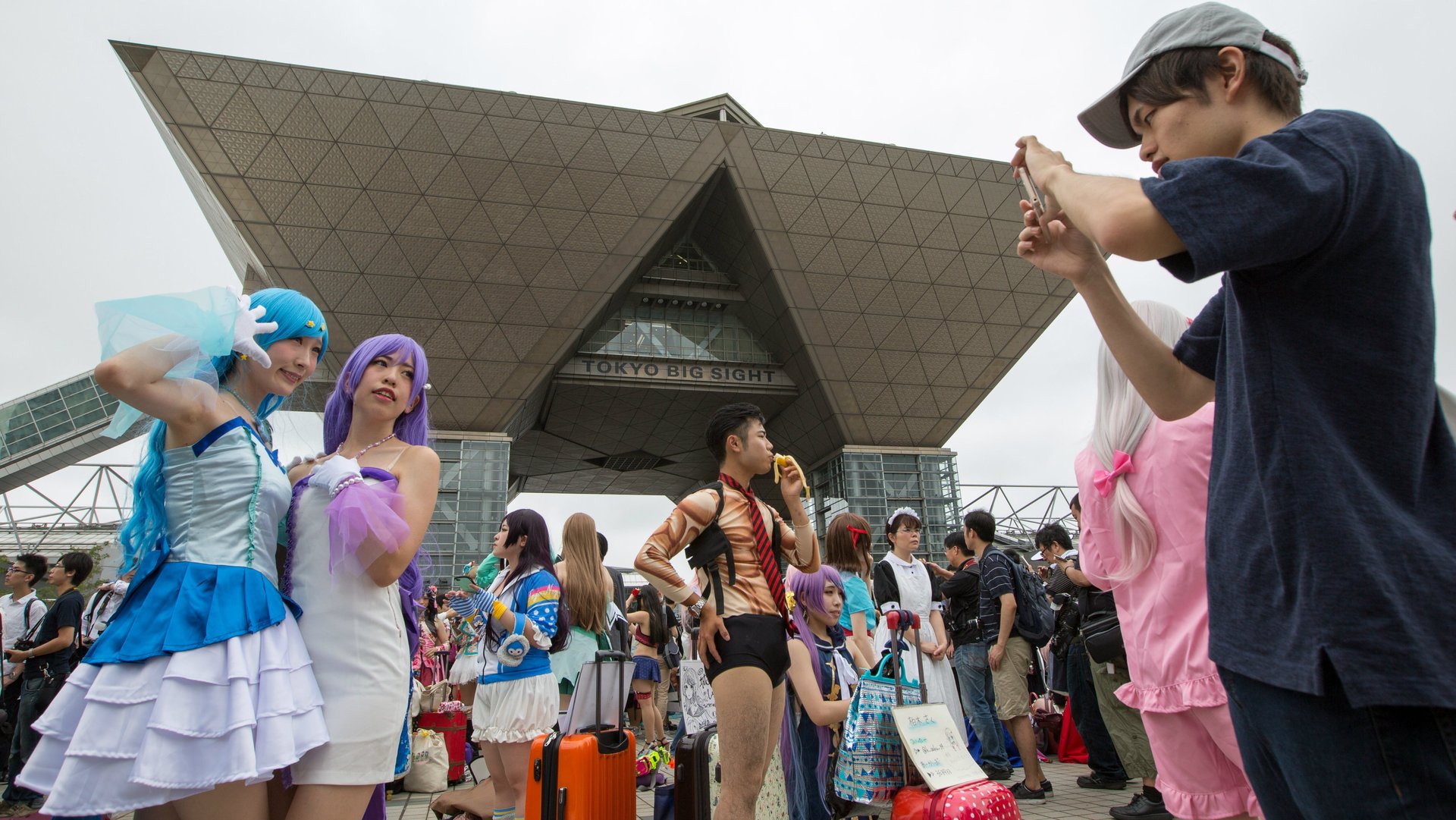Tokyo’s Comiket, not Comic-Con, is the biggest fan convention in the world
This weekend, about 130,000 people are gathering to celebrate comic books, sci-fi, fantasy, and all other things geek at the San Diego International Comic-Con. It is perhaps the most anticipated event of the year for fan girls and boys in the US. Yet despite Comic-Con’s size and grandeur, it is dwarfed by an event that will happen a month later, in the country that has perfected obsessive fandom.


This weekend, about 130,000 people are gathering to celebrate comic books, sci-fi, fantasy, and all other things geek at the San Diego International Comic-Con. It is perhaps the most anticipated event of the year for fan girls and boys in the US. Yet despite Comic-Con’s size and grandeur, it is dwarfed by an event that will happen a month later, in the country that has perfected obsessive fandom.
From August 10-12, around 500,000 people will gather for for the 94th Comiket (also know as the Comic Market). Held at the Tokyo Big Sight venue, the biannual Comiket is the biggest fan convention in the world. But this is no corporate marketing extravaganza. Comiket is a celebration of doujinshi, Japanese for self-published comics, novels, and magazines. The convention is a not-for-profit, and run by volunteers.
“Comiket is an event of the fans, by the fans, for the fans of manga in general and other mediums of self expression,” write the event’s planners. (Manga are Japanese-style comics.)
The Comic Market has humble beginnings. Started in 1975 to give experimental young manga authors an opportunity to show their wares, the first Comiket had fewer than a thousand attendees. Many of its authors were creating fan-fiction. Early favorites included anime Space Battleship Yamato and Mobile Suit Gundam, according to a history of the convention (pdf) put together by Comiket volunteers.
The event steadily grew throughout the 1980s; by the early 1990s, attendance had topped 200,000. In addition to buying and selling fiction, cosplay—wearing the costume of your favorite fictional character—has become a central part of the festival. The Tokyo Otaku News published an excellent review of the best cosplay at the December 2017 Comiket. (Wikipedia defines Otaku as “a young person who is obsessed with computers or particular aspects of popular culture to the detriment of their social skills.” Google Translate, more succinctly: “geek.”)
Comiket is a massive organizational undertaking, but reports say that, though crowded, the market generally runs smoothly. “As it is in Japan, the crowd automatically resolves itself into orderly but monstrous queues, even for toilets,” explains Reika Clare in an article for JapanTravel. Clare also explains the proper etiquette for taking pictures with cosplayers. “Don’t monopolize one cosplayer for too long, especially if there are people waiting,” she writes. “You can ask if the cosplayer is willing to do certain poses or shift their location a little, but be polite.”